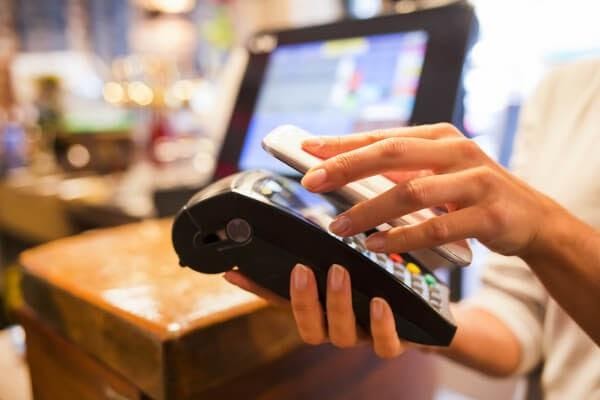The one thing that remains constant about the technology domain is that it changes constantly. As we already know, the digital revolution is touted as the next industrial revolution. With the advent of new and flashy terms such as AI, Blockchain, and countless others, the retail industry (like all the other industries) is experiencing change that never been witnessed.
By the end of 2020, more than 50 billion devices are going to be connected. Receiving and transmitting data to and from devices across the world. In terms of value, this booming industry in itself, called IoT, is going to be worth 3 trillion USD. Just imagine, the sheer magnitude of value that these interconnected devices are generating.
While the internet managed to enable communication between people, the gap in terms of value transfer was still there. For instance, the rise of blockchain as a solution was phenomenal, but the amount of power it consumes makes it anything but feasible.
Enter IoT for Payments
Even with all the bleeding-edge technology at our disposal, consumers are yet to experience the true frictionless method of payments without much hassle. With IoT, however, it is possible. And better than one would have imagined.
Consider this, when you saw James Bond steer that Aston Martin with features that mimic today’s connected cars. Did you ever consider the fact that you could also take care of the more mundane but time-consuming tasks such as paying at the gas station, or renewing your papers?
Well, it is a reality now. With IoT, companies and consumers can sit back and enjoy the ease that comes with frictionless payments. Think of the impact it will have in the retail sector. Whether you are looking to go shopping in the mall or buying sports gear, you could make the necessary payments with a smartwatch.
Read More: Top 10 Popular IoT Development Tools
With use-cases like this, IoT payments are set to transform how the retail industry works. Let’s take a look at some key pointers on how exactly this will happen:
The race among corporations to excel at frictionless payments
Say what you will about the digital age, serving consumers is all about providing the best products and services. Selling it with a marketing gimmick or at an insanely lower cost does not cut it anymore.
Brands across the world are investing heavily in providing the best customer experience at all the points of interaction with the customers. In the search of the frictionless payment option, companies have already been running trials with IoT payments and optimizing it.
In fact, it is not just about interaction with customers. From multiple levels of merchants to distributors, there are a lot of stakeholders involved in each product in the retail industry. To keep all these accounts uncluttered, a lot of man-hours and technological expertise are dedicated. By using IoT payments, these corporations wish to minimize this cost and effort.
Just think, if all the payments at drive-thrust were made using connected cars that you were driving. Won’t that save us a lot of time and hassle? The time it takes to process a transaction on cards or the effort it takes in managing and carrying cash all around would be a thing of the past.
Oceans of data being created
As the devices are interconnected, they are constantly interacting with one another. Each and every event recorded with one device eventually creates a new data point for all the devices it is connected with.
Because of this, the technology teams are on their way to finding ways to leverage this data. From optimizing their store arrangement to adding new products, this data can help in making all the crucial decisions.
Because of all this data, IoT payments make even more sense. As the devices record the data before and after a transaction is made, the retail companies can predict the buying pattern more accurately.
This will then help in maintaining an inventory in the long run. With more devices getting on the internet every day, it makes perfect sense for retail companies to leverage this data and create better experiences for the customers.
Read More: Role of Big Data in Financial Sectors
Automating the payments with IoT
In the conventional methods of accepting payments, delinquency rates, default rates, and fraud are quite common. This can create a lot of friction in the markets. Not only this, but the very process of generating POs and invoices is also more than cumbersome for a number of companies across the world.
With IoT payments, the process of making payments in the supply chain will be highly automated. Not only this, but the manual checking of supplies and inventories also will not be required anymore.
Because each and every transaction is logged by the IoT devices, it will always be aware of the inventory levels that are available.
Now that we have discussed the various factors that will drive innovation in IoT payments. Let us take a look at some of the examples of how the retail players can leverage this marvel and create value for themselves.
Making payments in the supermarket with a smartwatch
There can be a number of great use-cases of IoT payments in the retail industry. One of the most important ones, however, will be the ones that involve making payments with a smartwatch. The main reason behind this will be the fact that smartwatches are always close to the consumer.
Not only this, but the evolution of smartwatches has also already taken place to a large extent. So, the time-to-market in case of introducing payments with a smartwatch is not a lot.
To achieve this level of streamlined IoT payments, banks and fintech groups need to come up with better hardware as well as the necessary software. The first step towards this will be to deploying cutting-edge sensors and highly accurate tracking devices in the relevant devices. Following this, continuous delivery networks can do their job and keep everything updated.
Read More: Top Sensor Types That Are Being Used in IoT
Paying for auto parts with connected cars
Making payments with connected cars is going to be another important component of IoT payments in the future. Not only does it help you to save time, but it will also help in organizing the auto industry.
Imagine this, each and every part that is used by people in their vehicles would be tracked and stamped. The probability of faulty components being fitted in vehicles would come down dramatically.
From getting your wheels balanced to filling the tank at gas stations, everything will be streamlined. Saving tons of time and money for corporations as well as individuals.
Buying sports equipment in a smart gym
Say you are in the gym and want to try new equipment. Earlier, it would first require you to buy it online or in the store. Pay for it, and then try it later. Doesn’t have the same ring to it, does it? By deploying smart-gyms, companies in the sports retail industry can track their inventories as well as sales in real-time.
Conclusion:
Now that we have discussed the various factors on how IOT payments can revolutionize the retail industry, it is safe to say that the revolution is well and truly upon us. So, IoT app Development for payments is adopted by many retail companies at a rapid pace.
You can take your Retail outlet to a whole new level by adopting IoT in your Payment process. Hire a dedicated IoT App Development Company to do the same.









